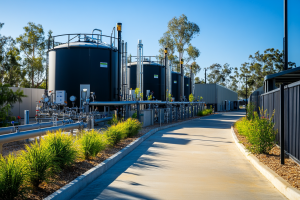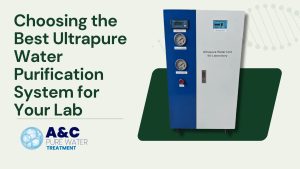
Use of Ion Exchange Resins in the Brewing Industry
1. Operational Guidelines: 2. Run Time: 3. Water and Cleaning Regulations: 4. Professional Knowledge for Brewing: Example Applications:
Macroporous adsorption resin is composed of styrene as monomer, divinylbenzene as cross-linking agent, toluene, xylene as pore-forming agent, and they cross-link and polymerize each other to form a porous skeleton structure. Resin is generally white spherical particles, particle size of 20 ~ 60 mesh, is a kind of cross-linked polymer containing ion exchange group, its physical and chemical properties are stable, insoluble in acid, alkali and organic solvents, not affected by inorganic salts and strong ion low molecular compounds.
Resin adsorption is dependent on the van der Waals attraction between the adsorbed molecules (adsorbents), through its huge specific surface for physical adsorption and work, so that organic compounds according to the adsorption capacity and its molecular weight can be separated by a certain solvent elution to achieve separation, purification, impurity removal, concentration and other different purposes.
Adsorption conditions:
The selection of adsorption conditions and desorption conditions directly affects the quality of the adsorption process of macroporous adsorption resin. Therefore, various factors should be considered comprehensively in the whole process to determine the best adsorption and desorption conditions.
There are many factors that affect the adsorption of resin, including the properties of the separated components (polarity and molecular size, etc.), the properties of the loading solvent (solubility of the components of the solvent, salt concentration and PH value), the concentration of the loading liquid and the flow rate of the adsorption water.
Generally, the larger polar molecules are suitable for separation on polar resin, and the smaller polar molecules are suitable for separation on non-polar resin. Larger pore size resin was selected for larger volume compounds. The adsorption capacity of resin can be increased by adding an appropriate amount of inorganic salt to the sample solution. Acidic compounds are easily adsorbed in acidic solution, alkaline compounds are easily adsorbed in alkaline solution, and neutral compounds are adsorbed in neutral solution; Generally, the lower the concentration of loading liquid, the better the adsorption. For the selection of dropping speed, it is better to ensure that the resin can be fully contacted and adsorbed with the sample liquid.
The factors affecting the desorption conditions include eluent type, concentration, pH value, flow rate, etc. The eluent can be methanol, ethanol, acetone, ethyl acetate, etc. According to the adsorption strength of different substances on the resin, different eluent and different concentration of eluent should be selected for elution. By changing the pH value of the eluent, the molecular morphology of the adsorbent can be changed and it is easy to elute. The elution flow rate was generally controlled at 0.5 ~ 5mL/ min.

1. Operational Guidelines: 2. Run Time: 3. Water and Cleaning Regulations: 4. Professional Knowledge for Brewing: Example Applications:

Driving Force Behind Australia’s Environmental Policies With the Australian government’s growing emphasis on environmental protection and sustainable development,

1. The Importance of Industrial Wastewater Treatment Industrial wastewater treatment is a crucial aspect of environmental protection and

In a laboratory setting, the quality of ultrapure water has a crucial impact on experimental results. Selecting the

In beverage production, the stability and purity of water quality are crucial to the final product. To ensure

The ion exchange resin manufacturing industry is experiencing a wave of technological innovation and environmental sustainability. With increasing
© 2024 Copyright By A&C PURE WATER TREATMENT Pty Ltd. Website Edited by Adver Marketing